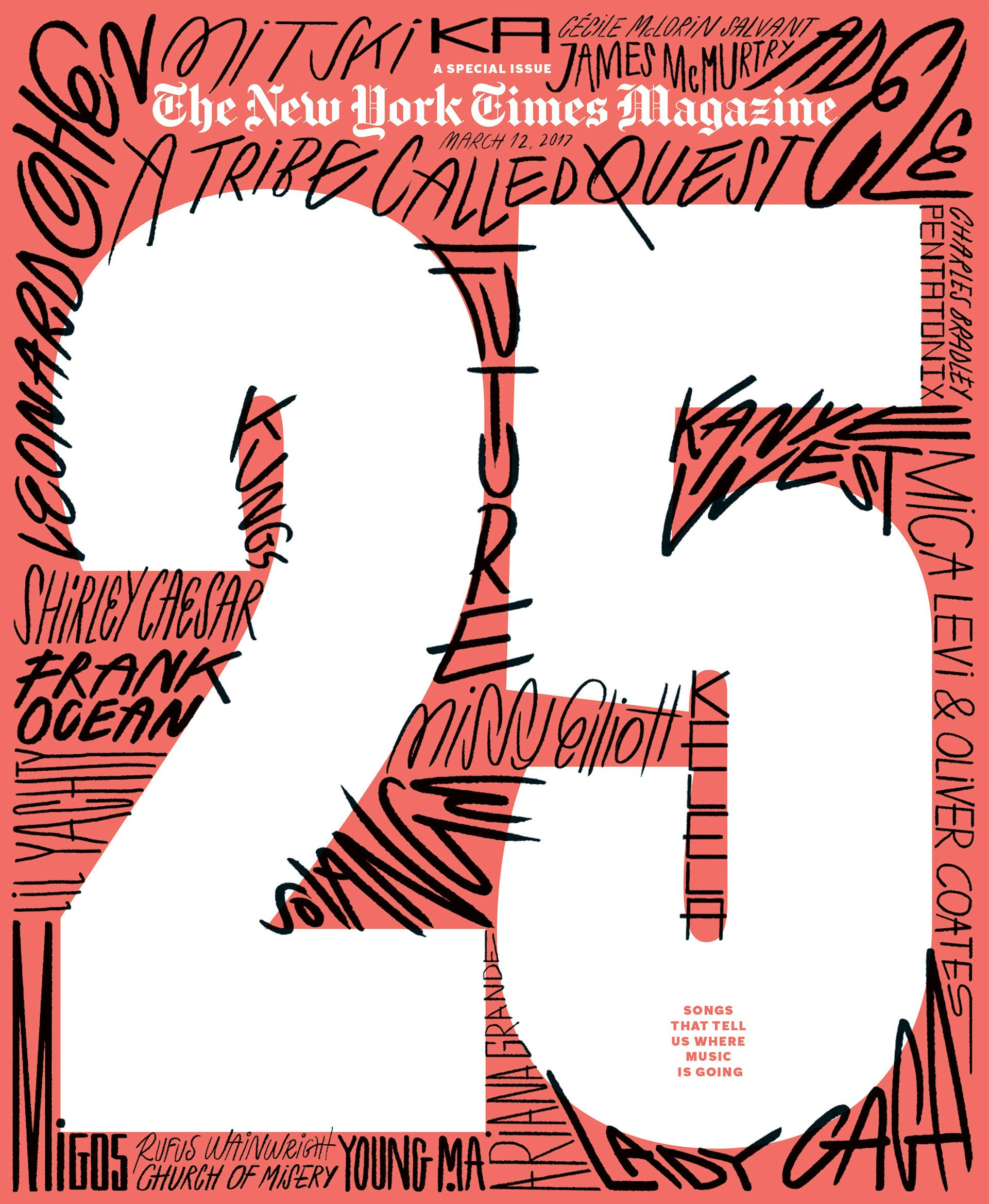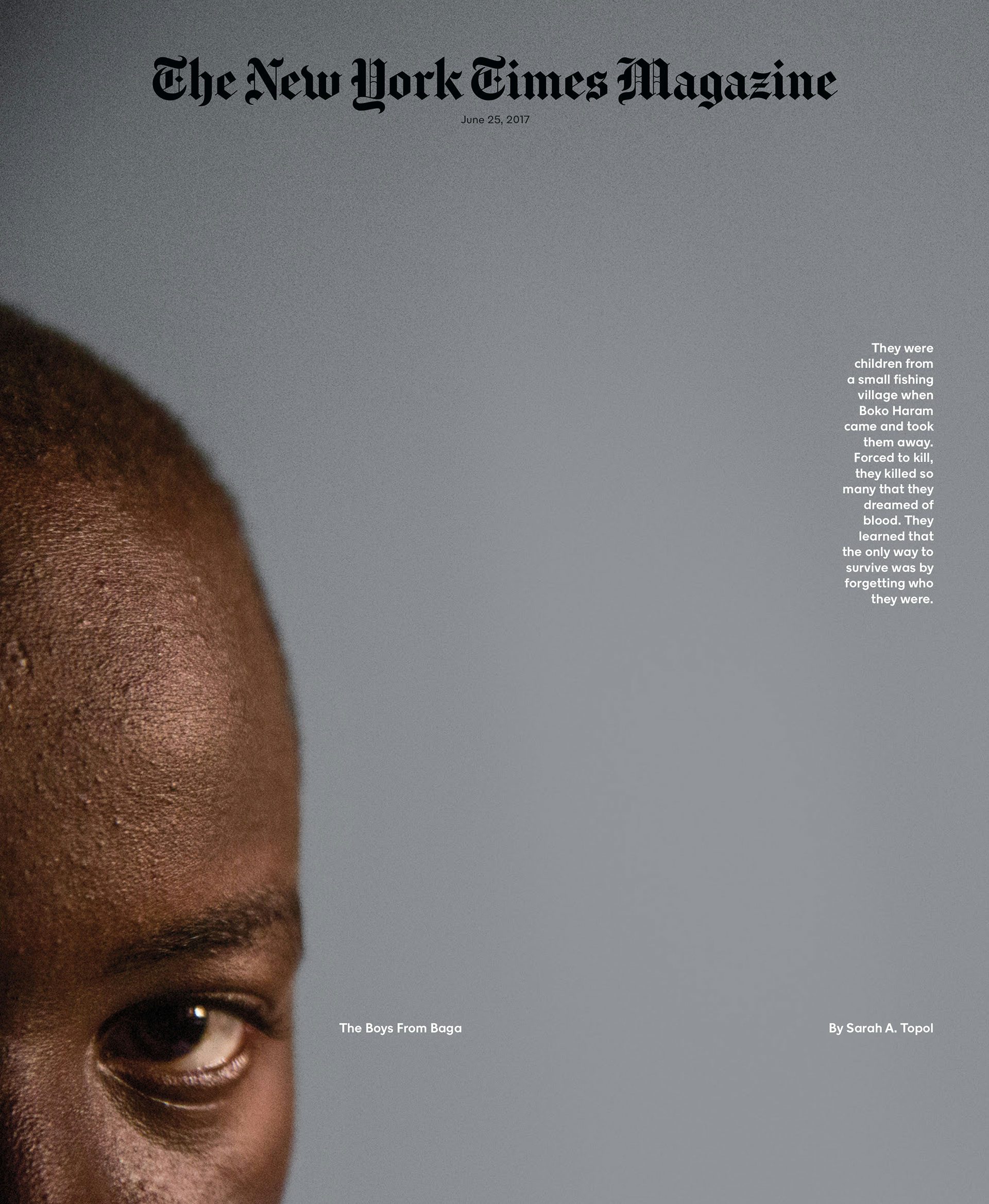The New York Times Magazine covers
The New York Times Magazine continues its formidable run of award wins with Best in Book this year for its covers. This project is Best in Book – Editorial in The Annual 2018
In 2015, the New York Times Magazine relaunched with a new design. The 119 year-old publication had appointed a new editor (Jake Silverstein), hired editorial designer Matt Willey as Art Director and promoted Gail Bichler to Design Director. In the three years since, Silverstein, Bichler, Willey and their colleagues have continued to put out one brilliant issue after another.
The New York Times Magazine’s art department is now made up of Bichler, Willey, and Deputy Art Directors Jason Sfetko, Ben Grandgenett. This team is responsible for designing all of its print content. A team of two, led by Debra Bishop, also creates special themed sections of the New York Times newspaper.
Stories are designed up to a couple of months in advance but covers work on a different schedule from the rest of the magazine. Photographic covers that feature documentary or portrait photography can be shot several months or weeks in advance. The process is quicker for conceptual covers, with designs often created in under a week.


“The process varies a lot depending on what kind of cover it is: if it’s a conceptual cover, we usually go through many rounds of sketches before we settle on a concept, and then several rounds of refinement,” she says. “These types of covers often go through fewer design rounds because the cover is more about the idea than the design. If it’s a photographic cover, it’s a matter of picking the right image, so we’ll do a round where we look at several different images. Sometimes we might put type on there to see the interaction between type and image … and then we would maybe zero in on one or two options.”
Bichler often creates dozens of versions of a single cover. “I don’t show them all to our editor – that would be overwhelming – but it’s a really collaborative process [within the art department]. We all get together and look at different options, we get people’s opinions and we whittle it down to our favourites.”
A recent example is the cover she created for an article on the future of the US Democratic Party (see p76). The cover featured an image of former US President Barack Obama with the top corner of the image folded over to reveal a blank page underneath. The headline read “Why can’t Democrats turn the page?” It’s a simple but effective concept and, like all of Bichler’s covers, it went through various iterations.


“It was a concept that I came to really quickly but people would be surprised to know the number of images I then looked at and the various experiments I did with folds,” she says. “Obama is such a recognisable figure that I could just have shown his chin and people probably would have known who he was, so I played around with showing just little parts of him and then parts of his eye. After looking through everything, I decided to go with one where I could see a sparkle in his eye, because I felt it added a bit of humour. It was a simple idea but even with something like that, the details really make or break the cover.”
Photographic covers go through the same level of scrutiny. The art department recently worked with photographer and artist Vik Muniz to create a cover for the Design and Tech issue, illustrating an article on the future of cars. The image showed a rusting steering wheel discarded like a relic on a patch of grass (a part that will no longer be necessary if self-driving vehicles become the norm), and was shot at Muniz’s studio in New York.
“We wanted the steering wheel to look like it had been abandoned in a forest rather than in someone’s back yard in Brooklyn, so there was a lot of back and forth about how abandoned it should feel and what types of plants we should be using,” Bichler says. “We wanted to have some bugs in it so we started putting dried butterflies and beetles in different places. The lights were really hot … after a while, we’d be going ‘where’s that one nice leafy green I had a while ago?’ and we’d realise it was dead! So we were racing against time to make that one happen.”
In the past few months, the art department have created covers about everything from agriculture and the New York Subway to sexual harassment. After the New York Times broke the Weinstein story, the magazine invited writers, artists and designers to create a piece of writing or imagery in response to the issue.


“That was a whole package that came about within two weeks from start to finish, including the writing, and I really enjoyed working on that one,” says Bichler. “We reached out to eight different artists and asked them to make a comment on some aspect or idea or feeling or trauma or thought they were having about all of these different revelations of sexual harassment in different industries.”
As the magazine isn’t sold on newsstands (it comes with the Sunday edition of the paper), its art department enjoys more freedom than most when it comes to cover concepts. “We’re able to take a lot of chances,” says Bichler. “We can publish images that a lot of newsstand magazines couldn’t … and a lot of images that would be a tough sell on the newsstand. We don’t have to put a lot of cover lines on there and we can cover up our logo … we definitely have a lot of freedom.” Whatever the subject, each cover has the same function. “It just has to communicate very directly and immediately. And ideally it would have some kind of emotional connection to the viewer,” Bichler says.
View all the winning work from The Annual 2018 here.
The New York Times Magazine Covers. Entrant: The New York Times Magazine. Design Director: Gail Bichler. Art Director: Matt Willey. Deputy Art Directors: Jason Sfetko, Ben Grandgenett. Director of Photography: Kathy Ryan. Deputy Photo Editor: Jessica Dimson. Photographers: Craig Cutler, Floria Sigismondi, Glenna Gordon, Jack Davison, Jamie Chung, Sam Kaplan, Vic Muniz. Illustrators: Andrew Rae, Bill Bragg, Bráulio Amado, Delcan & Company, Miaz Brothers, Sagmeister & Walsh. Editor-in-Chief: Jake Silverstein.




